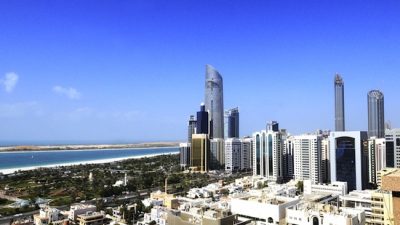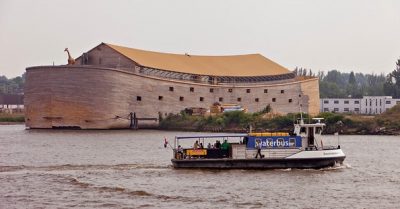
Yemen has the dubious distinction of being the first country that is expected to entirely run out of water, as the globe heats up. Its capital city Sana’a could be the first city to be emptied of its nearly half a million inhabitants by the catastrophic water scarcity that threatens billions by the the 2030s, with climate change. Except, for Sana’a, the end of water is expected in as soon as in six years, in 2017. So perhaps it is no surprise that it is a Yemeni who has had the winning idea for an international contest for “innovative ideas to improve the health and well-being in cities” Livable Cities Award, from Phillips, the US lighting company.
If there is one thing that makes a city unlivable it is no water.
Sabrina Faber, who has lived in Yemen for many years, and experienced water shortages herself, has won 75,000 Euros for her idea: a rainwater harvesting system incorporated into rooftops, based on the traditional designs she saw in the countryside.
Rooftop water cisterns are still in use in the countryside in Yemen, and throughout the country, flat roofs – with parapets – are common, making them seemingly ideal for this purpose. Hers would add water filtration to make the water safe to drink a crucial aspect of rainwater harvesting being innovated now by Israel.
But the fact that the idea has long been in use in the countryside, as it is in traditional buildings in other Mediterranean countries, but not in the city of Sana’a – despite near desperate straits suggests that houses in the city are not suitable for this system. Traditions that work don’t die out.
Maybe the city of Sana’a was settled earlier and its buildings are too ancient to support more weight on top? Certainly, the ones in her illustration in no way look able to support any extra weight by modern building code standards.
Yemen’s average annual precipitation varies greatly, with both droughts and floods common. Rainfall is unpredictable, from 500 mm (20 inches) 910 mm (36 inches) of rain a year, but many years there is none. When it comes, rain normally falls in the form of thunder-showers, heavy and short. But even that is not reliable. This combination of drought and infrequent heavy water loads is the worst-case scenario for antique building stock.
Related stories:
Waterless by 2017? Yemen Capital Fails To Harvest Its Summer Rain …
Cluster Of Turkish Buildings Cool Off With Roof Pools
Aqua Soft’s Drone Plane Collects Water From Air, Drops It As Rain




Currently I’m working in the governmental yemeni water institution and I am not authorized to present my private point of view (which is based on my 20-year experience in the national water sector)for a broad discussion.
Karin, before formulating any ideas on the improvement, the actual and site-related (not general!) water situation would be really recognized and quantified. It is clear for me, however, that in conditions of limited groundwater resources and a lack of perennial surface water flows, all water-saving and water-protection measures should be based on a hierarchy of water users and, therefore, would firstly be established and concentrated within rather limited areas contributing groundwater recharge to municipal wells supplying drinking water. The current practice in Yemen of random dissemination of such costly measures such as recharge dams, water harvesting projects, introduction of modern irrigation techniques, outside these critical zones obviously will not lead to significant improvement of a water balance. If saved water is not used directly downstream, it simply outflows to adjacent basins or to the sea without any benefit for local people.
Would you like to pen a guest post highlighting in more detail some of these points?
1. The commonly adopted statement that “the end of water is expected in as soon as in six years, in 2017” is simply a slogan because it lacks support from long-term groundwater level records available from monitoring wells: many of them show a lack of decline in water level in time. Very recently I’ve collected and analyzed these interesting data. Who and how has calculated the lifetime of 6 years? The same pessimistic forecasts have become available more than 20 years ago, but there is still groundwater in the Sana’a Basin.
2. Any countrywide estimates of water shortage in Yemen are completely meaningless because of a lack of reliable estimates of groundwater recharge and storage in different basins and aquifers. For example, the huge groundwater reservoir in Ramlat As Sabatayn (desert area NW of Sana’a) is completely unexplored at the moment.
2. Because of huge evaporation rate in Sana’a, the proposed rooftop water harvesting measure seems to be inadequate. Even dam reservoirs with much bigger capacity are only periodically functioning in Sana’a Basin
Victor, any constructive ideas on how Yemen can improve its water situation?